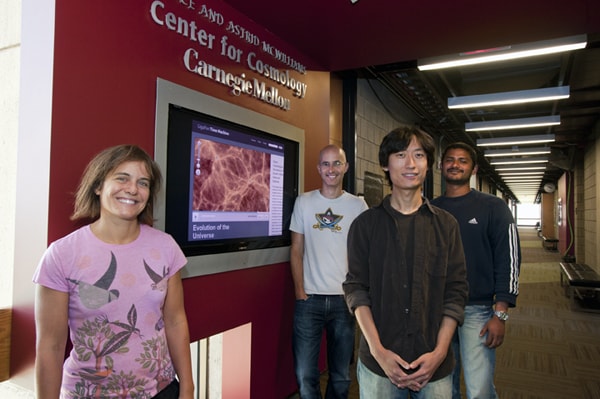Formation of the Universe
BlueTides Simulation Explores Early Universe
The formation of the Universe, and hence the question of how we all came about, has fascinated the imagination of humans ever since we shed the idea that Earth defines the center of the world. Current deep field surveys, such as those by the iconic Hubble space telescope, can access events that date back to about one billion years after the Big Bang. However, these observations reveal unbelievably strange objects such as quasars powered by truly titanic black holes that have accreted matter worth a billion solar masses, or more.
For a long time, it was just unconceivable how so much matter could have been amassed in such a small volume from the more or less homogeneous mass distribution within the very early universe over so little time – a billion years. But since we cannot currently “see” objects younger than one billion years because they are rare and faint we are missing a long and important stretch of the universe’s Curriculum Vitae. While we are still far from definite answers, important progress is being made on various fronts.
Computational Cosmology
On a related front, our capabilities to predict events in the early universe using computer simulations has soared in the past few years. The most advanced numerical simulation, BlueTides, a brainchild of Tiziana Di Matteo and her group at CMU Physics and the McWilliams Center for Cosmology, makes heavy use of the largest supercomputers provided by the National Science Foundation and covers the formation of individual objects in the early universe. BlueTides contains hundreds of thousands of galaxies and quasars in a volume that exceeds, by factors of hundreds, both previous large computer models and the volumes of our actual Universe as observed by current space telescopes.
One of the most exciting observations in BlueTides is that billion-solar-mass black holes, such as those that power the earliest quasars, can form in the early Universe. It thereby shows that there is no “new Physics” required to rationalize how the enigmatic first titan black holes may have formed. A recent Sky & Telescope article series (part 1 and part 2; copyright: Sky and Telescope magazine) provides easy-to-read context of how BlueTides helps solve one of the most confounding puzzles of the early Universe. The original scientific article that discusses the BlueTides results can be accessed at MNRAS, the Monthly Notices of the Royal Astronomical Society.
